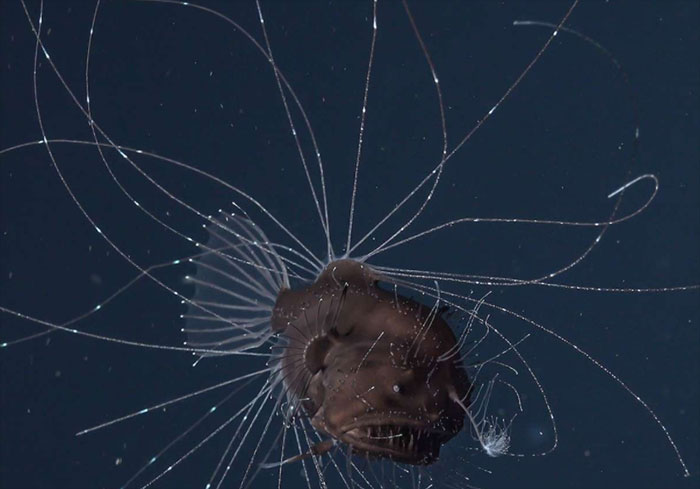A fish with an immune system of unsuspected abilities
Deep-sea anglerfish, a unique mode of reproduction in the world and an astonishing immune capacity
The ocean depths, a world of a thousand mysteries
You dreamed of discovering the mysteries surrounding the fascinating ocean abyss, here is one that has been unsolved since its discovery in 1920, and finally explained on July 30, 2020 by German and American scientists in the journal Science. It is a century-old enigma concerning the sexual parasitism of a species of deep-sea anglerfish.
Deep-sea anglerfish, live in the abyss of the ocean, at a depth of about 1000 meters, where the water is around two degrees throughout the year. At these depths, light never penetrates and the animals there are adapted to life in total darkness. Deep-sea anglerfish have been studied for many years because of their unique mode of reproduction.
A unique mode of reproduction
Called sexual parasitism, this formula is explained by the “fusion” of the male and female until their death. In this way, they establish a common blood circulation, and the male becomes totally dependent on the female for the supply of nutrients, comparable to a fetus in its mother’s womb. This astonishing fusion enables successful reproduction between males and females, who, living on the sea floor, meet only very rarely. But above all, it forms an anatomical junction unknown elsewhere in nature (except in genetically identical twins). The hitherto unsolved mystery lies in the fact that the union is not rejected by the female’s body, as is often the case when a human receives an organ transplant, for example.
In the end, it was researchers at the Max-Planck Institute for Immunobiology and Epigenetics in Freiburg, Germany, and the University of Washington in Seattle, USA, who solved this century-old puzzle.
Disturbing immune mechanisms but bringing many hopes
To understand how this mode of reproduction works, scientists have been interested in the Major Histocomplex (MHC) of several species of deep-sea anglerfish. The MHC is the system that allows the immune system to recognize the self from the non-self and is unique to each individual. This MHC is divided into two molecules forming the MHC class 1 and 2. For the human being, for example, six genes code for class 1 and eight genes code for MHC class 2. deep-sea anglerfish, on the other hand, have far fewer genes encoding the MHC, and their lymphocytes (which are supposed to eliminate infected cells or attack foreign bodies) are also far less present. Thus, no antibodies are likely to attack the male during its fusion, which may then become one with the female and supply her with sperm for reproduction.
And while antibodies are less abundant in anglerfish, it has been found that some deep-sea anglerfish species do not even have any antibodies at all, even though they are the second most powerful weapon in the immune system. For example, in humans, an absence of antibodies would lead to immunodeficiency, which would be fatal. Anglerfish, on the other hand, have the ability to survive without acquired immune functions and are said to have “very efficient innate mechanisms to defend themselves against infections”, explains one of the researchers.
Although these species have not yet revealed all their secrets, the results of this study point to possible new avenues of research for human patients suffering from immune disorders, a distant hope for people suffering from these types of diseases.
Source:

